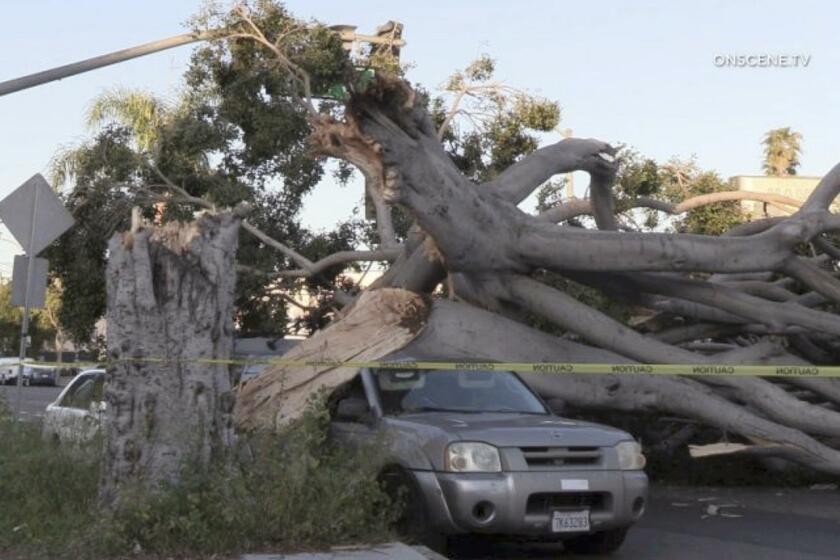A Grass-Roots War Against Graffiti : New programs to overcome the ugliness--and the sense of hopelessness
Los Angeles and its residents now spend millions of dollars annually to clean up or paint over graffiti left in seemingly every nook and cranny of the city by young vandals. Street signs, walls, freeway dividers, garage doors, palm trees; no object or neighborhood is immune from this visual scourge. Even worse, the crime, which is most often committed with concealable spray-paint cans and marker pens, is of the “hit and run” variety and thus rarely punished. That could change, fortunately, thanks to heightened community awareness and the expansion of citizen-based patrol programs to combat this creeping blight. Successful anti-graffiti watches are already underway in the Harbor area and parts of the San Fernando Valley.
And now, thanks to an innovative proposal passed by the L.A. City Council, more local residents will get the opportunity to fight graffiti in their own back yard through a surveillance program that pairs reserve police officers with neighborhood volunteers to catch “taggers” in the act.
Under the plan, volunteers who live within the Hollenbeck, Southeast and Pacific police divisions will be trained, outfitted with radios (and, depending on available funding, video cameras) and sent out to areas of their communities hardest hit by tagging to watch for trouble. Residents can then radio-in suspicious activity to reserve officers who will be on hand to apprehend these spray-paint-wielding outlaws.
The council also placed Operation Clean Sweep in charge of coordinating citywide graffiti cleanup efforts in addition to creating a toll-free telephone number so that citizens can report tagging incidents.
These programs make sense not only because the city saves money by depending on citizens and unpaid reserve officers; because of community participation, these programs help restore a sense of pride and civic responsibility in a city where many people feel increasingly helpless to do anything about urban problems. It doesn’t have to be that way.
If graffiti has become an enduring symbol of decay, then increasing community participation will surely become a symbol of a revival.
More to Read
Start your day right
Sign up for Essential California for news, features and recommendations from the L.A. Times and beyond in your inbox six days a week.
You may occasionally receive promotional content from the Los Angeles Times.





